Arthritis, An Increasingly Common Condition

In this blog I want to give hope to those suffering with arthritis, a condition that affects nearly 25% of the US adult population, especially those over the age of 45. Arthritis plagues US society, costing over 300 billion dollars annually, and is a growing problem worldwide.
Though I have not personally experienced arthritis, I have many friends and loved ones who have. I care for them and hate seeing how they are so negatively affected by arthritis without being given much help other than pain pills to mask the symptoms. Because I believe diseases have root causes that must be understood in order to truly find cures, I investigated alternative theories of causes and treatments. Though I’m not a doctor, this is the distillation of what I have found.
Generally, arthritis can be described as a disease affecting the joints with some combination of pain, redness, heat, stiffness, and/or swelling. The inflammation that comes with arthritis is an immune response. There are two primary types of arthritis – osteoarthritis and rheumatoid arthritis.
Osteo Arthritis
The most common, osteoarthritis, affects the joints in a more mechanical manner and increases in prevalence and severity with age. Repeated activity, improper movement patterns, past injuries, and how weight is distributed over time all may trigger it. Osteoarthritis causes degeneration in the cartilage meant to protect joints by acting as a shock absorber and something smooth for the bone to move on. The cartilage gets thinner, narrowing the space between the bones of the joints. Bones spurs may develop causing further pain. Osteoarthritis may affect only a few or many joints, most commonly the knees and hips, but also the feet, hands, or any other joint.
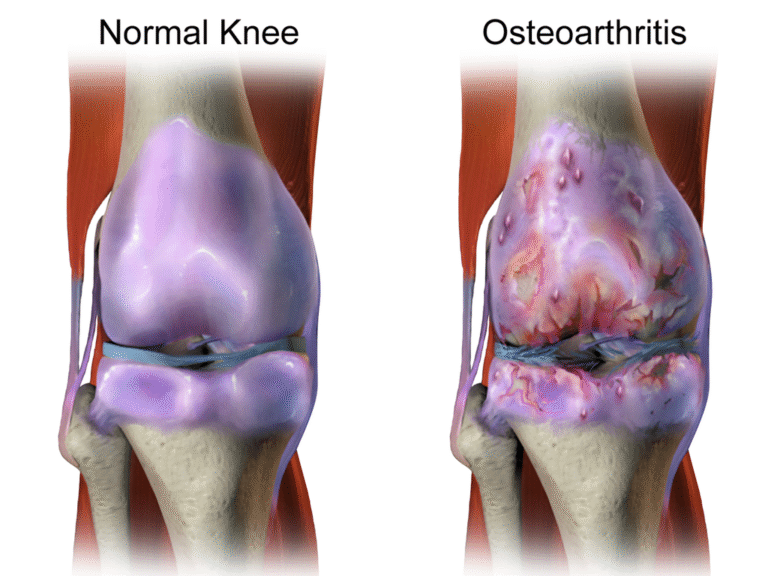
Rheumatoid Arthritis
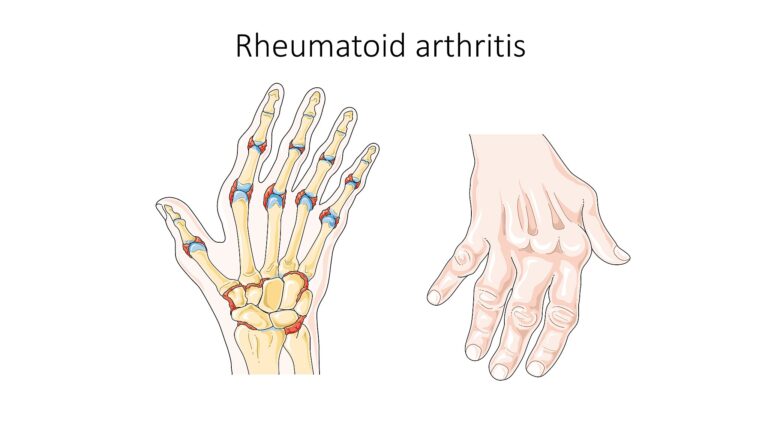
Rheumatoid arthritis, on the other hand, is a progressive, chronic inflammatory, autoimmune condition that is more often hereditary. It generally starts at an earlier age. The immune system actively attacks the joints causing a widespread problem. Someone with this condition experiences significant stiffness that increases with long periods of rest. Thus, the second half of a night’s sleep is especially bad, and the stiffness experienced in the morning lasts longer than it does with osteoarthritis.
With this blog I want to bring you information about natural and alternative treatments for arthritis. I hope it will include new information and bring hope that the pain of this disease can be greatly reduced or eliminated. I’ll begin with osteoarthritis, but I will address rheumatoid arthritis last because I believe I have found research and testimonials that provide the possibility of relief from both types.
Root Causes of Arthritis
What It's Not

Many have long assumed osteoarthritis to be a wear and tear condition, with your body breaking down over time. However, there are problems with this assumption, especially when it’s considered the primary cause. First of all, exercise and use of the affected joints has proven to actually help dramatically reduce the pain associated with arthritis. Studies have found less arthritis in more active people as compared to those with a sedentary lifestyle.
Secondly, your entire body is constantly in a state of breakdown, repair, and replacement. Almost every cell of your body is replaced routinely. For this reason, arthritis does not occur because the cells in the joints break down or fall into disrepair. The disease occurs because something is keeping them from being replaced as quickly or effectively as needed. As a result, identifying the reason for the lagging repair and replacement of cells is the key to fixing the underlying problem.
Glucose
Nutritional Causes for Arthritis
Effective joint repair requires proper circulation and nutrition. Eating too much sugar and carbohydrates over time leads to high blood sugar and insulin resistance. This results in hyperinsulinemia, (high levels of insulin constantly in your bloodstream), a condition directly linked to arthritis symptoms. (See my post on Insulin Resistance).
Therefore, food that includes too much sugar or carbohydrates which break down into sugar, may lead to and/or worsen arthritis. Also, chronically high insulin levels mean less autophagy (or breakdown and recycling of damaged cells). This increases the prolonged inflammation that speeds up arthritic degeneration and prohibits its healing.

Other Nutritional Triggers of Arthritis

In addition to glucose, some food allergens may trigger inflammation. (See post on Chronic Inflammation). Some common allergens include gluten, dairy, or even some plant toxins. Of course, pesticides, additives, and GMOs would also have to be considered. Another widely pervasive nutrition-based cause is the huge imbalance of Omega 6 fatty acids over Omega 3s. This comes mostly from highly processed foods and seed oils that are far too common in the average diet.
Non-Nutritional Triggers of Arthritis
Old Injuries
Aside from nutritional triggers of arthritis, injury to a joint may initiate the development of arthritis. This especially holds true if it isn’t given enough rest to heal and allow the inflammation to completely subside. Healing should be followed by strengthening and range of motion exercises for muscles around the joint. This lessens the likelihood of uneven wear on the joint long term which decreases the likelihood of arthritis. Exercise also improves the circulation around that joint, better finalizing its healing and preventing arthritic development.

Iron Overload

Another possible unexpected cause of arthritis, especially in the knuckles and knees may be iron overload, or hemochromatosis. A lot of multivitamins and fortified foods have elemental iron that isn’t easily absorbed. Tylenol and a high carb diet will hurt the liver and its ability to get rid of iron. Some other signs of too much iron include fatigue, abdominal pain, bloating, bronze skin, liver cirrhosis, and more.
There are a few ways to mitigate hemochromatosis. Donating blood is one. In fact, if you feel better after giving blood, this may be a sign that you had too much iron. Copper, as part of trace mineral supplements, may help by transforming ferrous iron to ferric iron allowing it to be transported to the areas of the body where it is needed. Fiber may also reduce iron overload because of its phytic acid. Green tea, cilantro, and quercetin can also help reduce it as well.
Magnesium Deficiency
MAGNESIUM
Finally, magnesium deficiency has been correlated in observational and lab tests with worse arthritis. It is associated with worse pain and function in the joints.
Unfortunately, this deficiency is pervasive in modern society and not easily seen in a blood test since less than 1% of magnesium is stored in the blood. The good news is that raising the dose of magnesium by 100 mg per day in tests corresponded to an improvement of cartilage volume and thickness.
There are many forms of magnesium that can be taken as a supplement, and all are safe to take. The worst side effect of an overdose being that your body will flush what it can’t absorb out like a laxative. If this happens, the dosage and/or type should be adjusted. The cheapest but least absorbable is magnesium oxide which should likely be avoided as a waste. Magnesium citrate is highly bio available but also most likely to cause gastrointestinal issues. Perhaps generically best is magnesium glycinate which is gentler on the stomach but also bioavailable and helps with relaxation and sleep. Magnesium sulfate, also known as Epsom salt, is absorbed through skin, and helps muscles and arthritic joints.
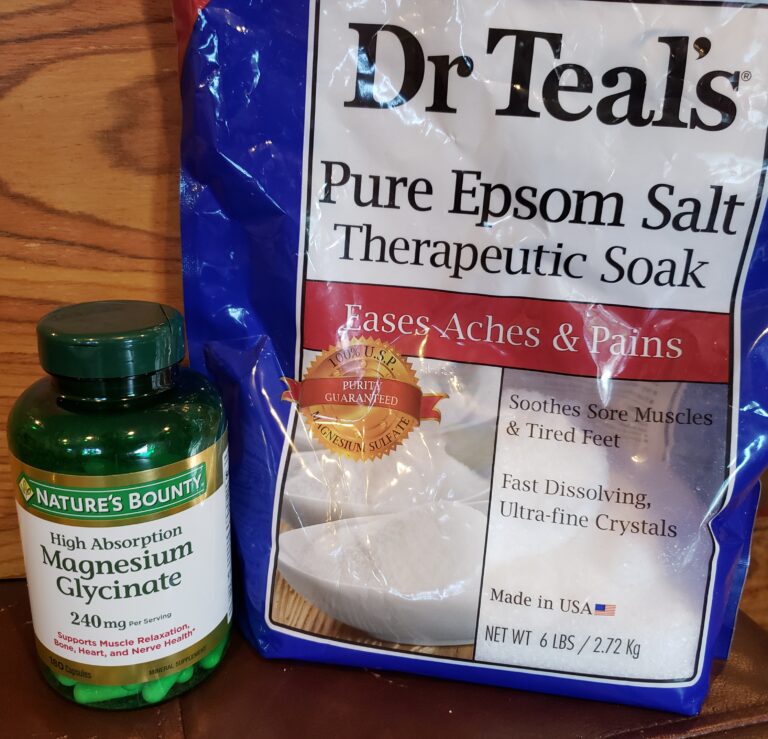
Please watch this helpful video by Jeffrey Pend MD for more great information on these and other forms of magnesium. Different types of magnesium may address several conditions including cardiovascular issues, blood pressure, arrhythmias, nervous system problems, energy, topical application, or brain health. In food, magnesium may be found in avocados, dark leafy greens, lentils, almonds, pumpkin seeds, and very dark chocolate. Though the bioavailability of magnesium in plants may be low, eating them may still be helpful as long as you don’t have a sensitivity to the oxalates and plant toxins. Otherwise, beef, oysters, and eggs are great sources of magnesium.
Help Healing Arthritis
Food

The best, most natural, and in many cases, most effective place to start healing from arthritis is through an anti-inflammatory diet. The first things to get rid of are highly processed junk foods and anything cooked in seed oils along with any added sugars. Some examples of additives to eliminate at this first stage include aspartame, trans fats, msg, modified starch, and anything you can’t pronounce in an ingredient list.
Cook with animal-based fats/tallows, butter, and ghee, or use avocado, coconut, or olive oil (for lower heat). Use organic, non-GMO foods as much as possible. Some people will feel a great difference by just doing this for a month. This change in diet gets rid of many man-made toxins and also rectifies the omega 6 to omega 3 fatty acid imbalance that contributes to inflammation.
The next foods to exclude include grains and refined carbs. This will help most others suffering because they make up some of the most inflammatory foods in the American diet.
Some people don’t realize they are allergic to processed dairy and should try eliminating it if still suffering from inflammation. However, those who seemingly have a dairy allergy may still be able to handle raw dairy, A2 dairy, or dairy from goats or sheep. If you have eliminated all the above things, you are basically on a paleo diet of natural, whole foods. This diet will also greatly help if you’re overweight, an aggravating factor for people with arthritis.

However, if a paleo diet doesn’t fully fix the problem, there is one last step. Plants have toxins or anti nutrients like oxalates that some people have difficulty dealing with and therefore may be the cause of inflammation. This is why a carnivore diet is the ultimate elimination diet that may be needed, at least temporarily, to heal inflammation and discover what foods your body negatively reacts to as you add them back one by one. Realize that as you cut out many of these foods your body has grown accustomed to, like sugar, carbs, and high oxalates, you will likely experience detox withdrawal symptoms on the road to healing.
Spices
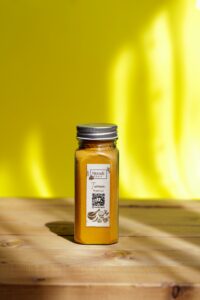
TURMERIC
Surprisingly, turmeric with its active compound, curcumin, is one helpful spice you could incorporate into your food along with black pepper for better absorption. It can also be taken as a supplement. Tumeric has actually been tested to work just as effectively as NSAIDs like ibuprofen and naproxen but without the side effects. It has repeatedly shown clinically meaningful benefits in human trials.
Supplements
Mineral Supplements

ZINC
In addition to diet, there are some supplements that may be very helpful. Magnesium, already mentioned, should be at the top of your list of things to try. Combining it with zinc as well as a D3 K2 combination may increase its effect. Zinc helps absorb magnesium and metabolize calcium so it ends up in your bones as it should. It slowly and steadily heals internal damage, improves gut health, and assists the overall immune system. It also helps in collagen production, a key building block of cartilage. Finally, the mighty zinc helps balance estrogen and testosterone which play a role in bone health and joint protection as well.
Zinc picolinate or gluconate are the most bioavailable forms but should not be taken on an empty stomach or with a calcium supplement. The D3 K2 combo is generally another way to help to the immune system that many people are deficient in.
BORON
An underrated trace mineral that helps your body hold onto Vitamin D, magnesium, and calcium while helping keep your bones strong and joints flexible, is boron. Many people are deficient in boron because so many soils have been depleted of this important mineral. It is less toxic than salt so if you decide to try taking it, my research suggests starting with at least 6 milligrams or more in order to see a change.
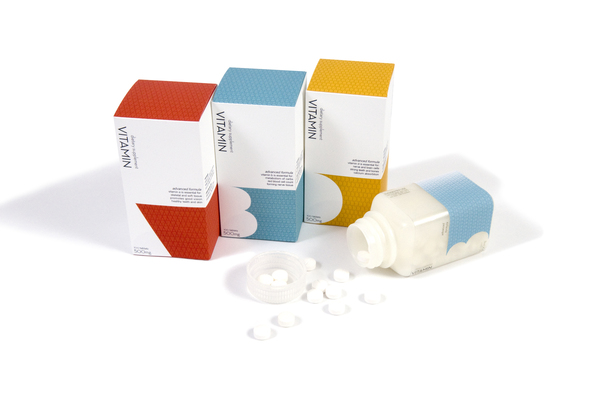
Other Effective Supplements

NIACINAMIDE
My friend was quickly developing severe arthritis in her hands. I saw a video by Dr. Berg about the supplement, Niacinamide, and gave some to her. She reported major relief within a very few days. On the other hand, I got it for someone else who reported increased energy but not significant arthritis relief.
Niacinamide, a form of B3, helps to reduce oxidative stress and is a precursor to NAD (Nicotinamide Adenine Dinucleotide) which helps turn food into energy. If you’re deficient in NAD, you’ll experience low cartilage repair, inflammation, joint pain, fatigue, and faster aging among other things. Dr. Berg recommends taking 100-150 mg 3 to 6 times a day with sufficient protein and no alcohol.
BOSWELLIA SERRATA
Jeffrey Pend MD in this helpful video gives a small list of supplements found to be effective when measured in tests against a placebo. At the top is Boswellia Serrata, an ayurvedic anti-inflammatory pain relief remedy from the frankincense tree that has been tested to work. It is generally considered safe but may interact with prescriptions. It reduces pain and stiffness and improves joint function. You need to take it for at least four weeks to see benefits. Some people have also found relief using the related frankincense essential oil.


GLUCOSAMINE & CHONDROTIN
Glucosamine and chondroitin taken together have also helped many people to decrease pain and stiffness and improve function. They slow joint degradation and moderate inflammation.
COLLAGEN
Also, collagen has been tested to improve movement and reduce pain by enhancing cartilage synthesis, reducing inflammatory markers, and promoting extracellular matrix stability.
Quality Important
It’s important to carefully investigate the quality of the supplements you get. Try to research so you don’t waste money and become needlessly frustrated with supplements that don’t work because they don’t contain what they say, and/or they have extra harmful ingredients. You may look at labels for NSF (National Sanitation Foundation) or USP (U.S. Pharmacopeia) third party certifications which review accuracy of labels, toxicology, and content of supplements, all of which are very important in the industry.
Help Through Topical Applications
Many sufferers find temporary pain relief with a few topical creams and oils. Capsaicin Cream is one that has been found to be equally effective to NSAIDs in studies, yet without the negative side effects. CBD creams and oils have also been successfully used to reduce pain. Finally, topical NSAIDs (non-steroidal anti-inflammatory drug) creams such as Aspercreme are better than NSAIDs like ibuprofen, aspirin, or naproxen taken orally, because they avoid most of the negative side effects when taken long term.
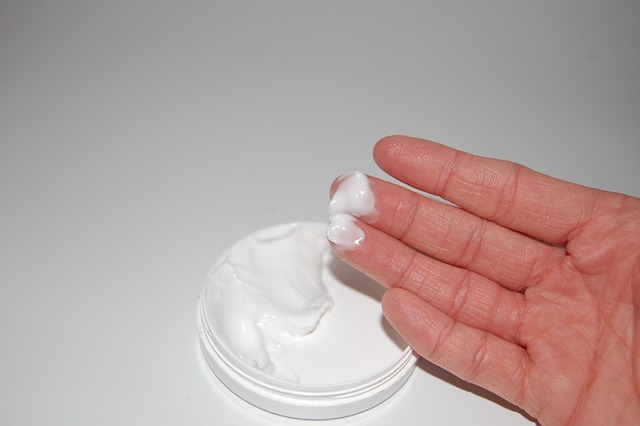

Interestingly, both cold therapy and heat therapy have aided in short term relief. The cold numbs skin nerves, thus decreasing pain, swelling, and inflammation locally. It may be particularly useful for acute or recent flare ups and after exercise. On the other hand, heat relaxes muscles and increases blood flow, reducing stiffness. This may be particularly useful before exercise to increase flexibility as well as to help with chronic pain.
You as an individual should experiment to determine what works best for you and when. Similar to heat therapy, some have used paraffin wax baths to calm pain and increase flexibility. Along the same lines, saunas also provide this therapeutic heat while helping to remove toxins from the body through sweat. In this video Dr Pend talks about these treatments as well as some medical interventions to consider and those to avoid.
Motion is Lotion
Finally, numerous studies have shown that perhaps the most effective help to arthritis sufferers is appropriate exercise. As one doctor described it, “Motion is lotion.” It lubricates joints, decreases the progression of arthritis, and strengthens muscles around the joints. The familiar saying, “Use it or lose it” also applies to cartilage, muscles, and other tissues in the joints. You must use a tissue in order to stimulate the body to regenerate it.
For most people, regular gentle to moderate exercise and strength training that builds from lighter to heavier works best. Modify activities that are repetitive and harsh. Swimming, walking, cycling, or using an elliptical are some good options. Aim to exercise 30 minutes 5 times a week. Consistency is the absolute key to success and pain relief over time.

Even if this seems out of reach due to the severity of your condition, do smaller amounts for however long you can manage it and work your way up slowly. Believe it or not, this includes people who suffer with bone-on-bone cases. If you have a severe condition, I suggest this video by MSK Physiotherapist Stephen Bunting who gives testimonials and further instructions about specific types of stretches and exercises for severe cases that have helped his patients.
Rheumatoid Arthritis
As mentioned at the beginning of this blog, rheumatoid arthritis is an autoimmune disease in which the immune system actively attacks the joints. It can be checked through blood tests. Some early signs include lingering joint ache or pain usually affecting small joints in the hands or feet first. Low grade fevers, extreme, persistent fatigue and many other symptoms may also exist as mentioned in this video with Dr. Diana Girnita.
Moringa

MORINGA
In my investigations of this debilitating illness, I found two videos that gave me hope for those suffering with it. The first was a first hand account of an almost miracle herb for one man with rheumatoid arthritis. He used moringa. This is an updated video in which many people’s comments attest that they have experienced the same relief he has with this supplement that can be taken as a powder, extract or in a capsule. I have since seen other video testimonials on moringa’s seemingly miraculous help with this disease and inflammation.
Plant Toxins Tricking the Immune System?
The second video I saw provided evidence that begins to uncover the possible underlying cause of this disease and other autoimmune conditions along with the successful treatment. Dr. Berry relays the astounding success rate of people from his clinical practice who have experienced nearly the complete disappearance of symptoms once they go on a carnivore diet. I will explain briefly the reason he believes this diet has been so successful.


Amino acids are building blocks your body uses to make the proteins that make up all your tissues. Some are required in our diet, others are considered non-essential because our bodies can make them. Finally, there are other little known non-nutritive amino acids your body can’t use at all. These all occur in plants.
Someone with an autoimmune condition may have a body that mistakes one or more of these non-nutritive amino acids for a very similar looking amino acid it does need. For example the Zetadine in garlic, onions, beets, and other plants may be mistaken for proline and mis-incorporated into proteins, thus mis-shaping them. The immune system then attacks what it sees as foreign invaders. In this case the immune system isn’t over-active as has been commonly assumed, instead the body has been tricked.
Veterinarians know about this because of their understanding about why some animals can’t eat certain plants. This phenomenon, which needs much more study in humans, is quite possibly why a carnivore diet which avoids all 600+ non-nutritive amino acids heals numerous autoimmune diseases. Watch this video and read the attached research for further details and understanding. In fact, he lists 10 autoimmune diseases his clinical experience has shown to be helped by this diet. I also encourage you to read the comments.
In this video, Mikala Peterson describes suffering with severe juvenile rheumatoid arthritis, depression, skin issues, and other things from a very young age with no relief in sight until she tried the carnivore diet and then the even stricter lion diet.

Concluding Thoughts
Dietary triggers and mineral deficiencies seem to play a role in so much of what I investigate. Arthritis was no different. As a result, dietary changes, supplements, non-pharmacological, and non-invasive treatments are also possible to relieve the pain and even reverse the disease. Consult your doctor before making any significant changes or taking supplements, especially if you are taking prescribed medication.
Each individual is unique with a body that reacts differently to various triggers and treatments. I hope I have given you something new to look into and try if you have been struggling to find relief. I encourage you to watch the attached videos by some of the experts I’ve learned from. If this article has helped you, please share, subscribe, and/or comment to help me and others out.

